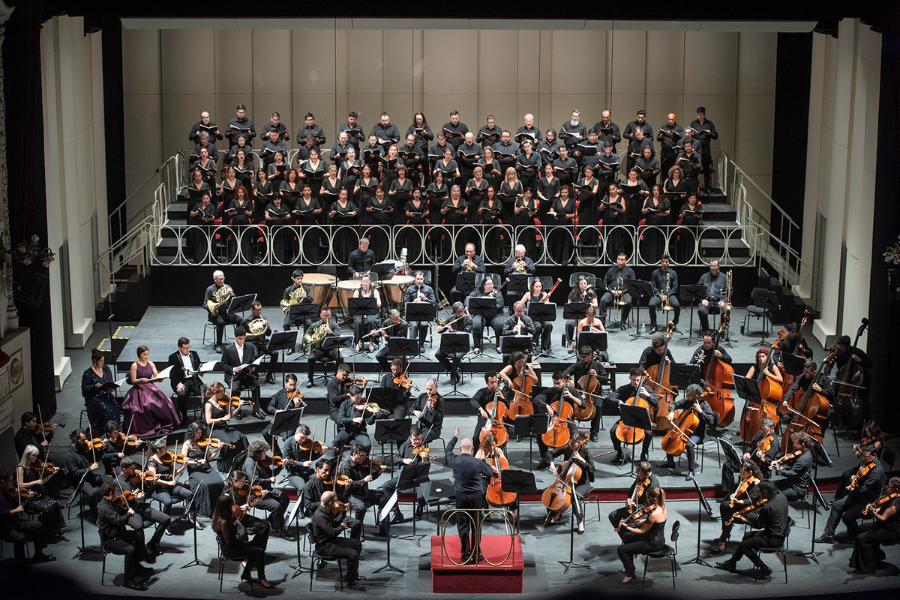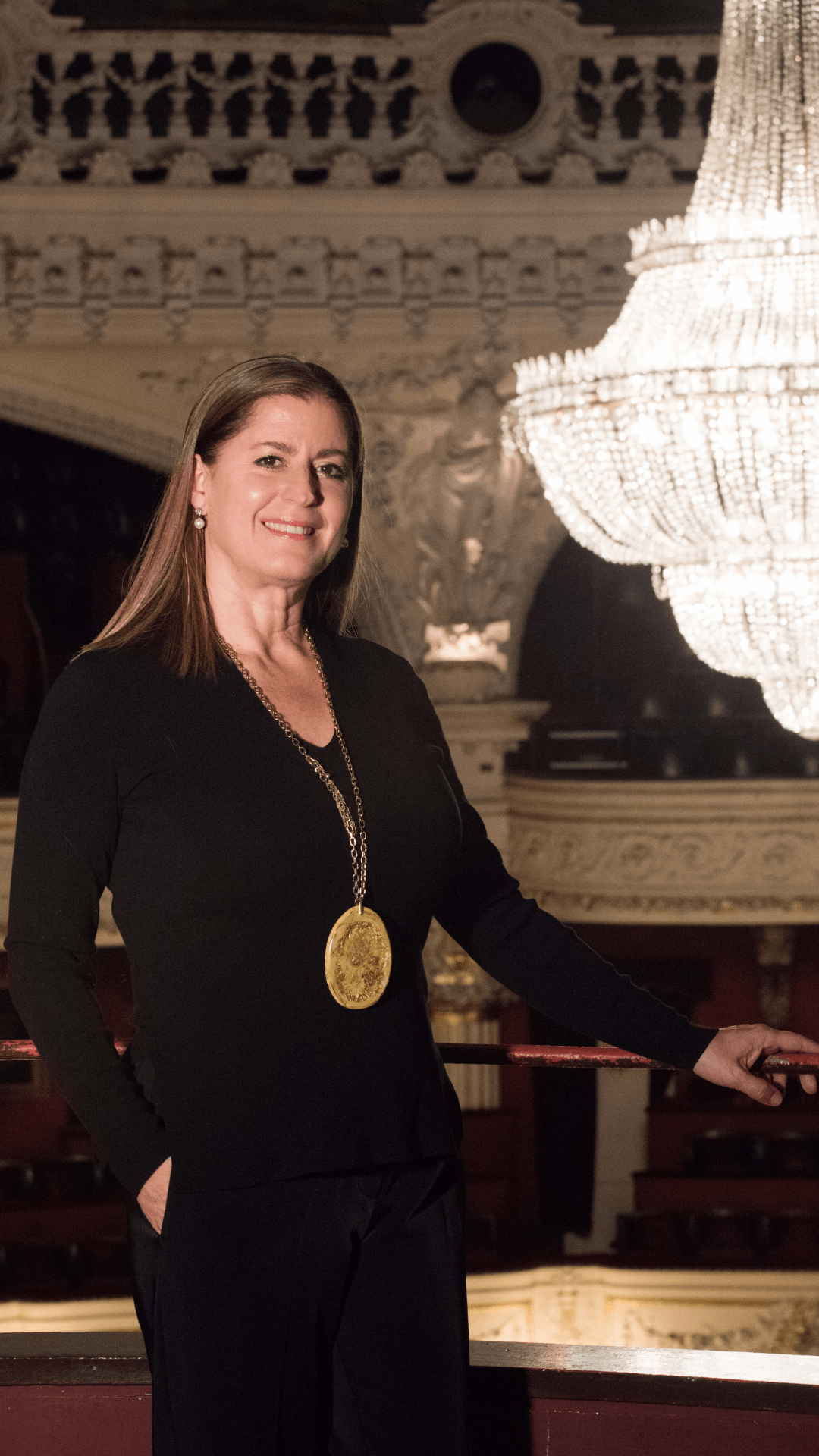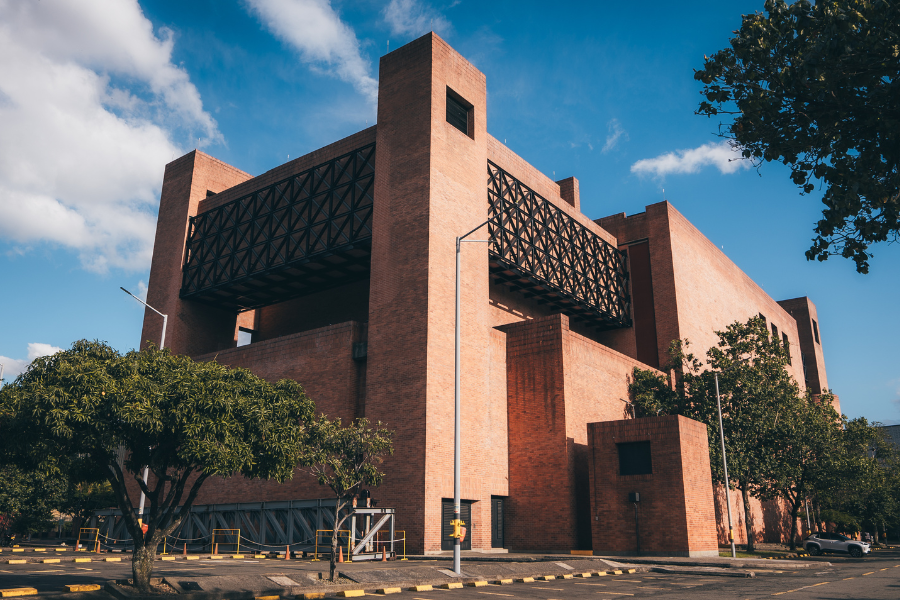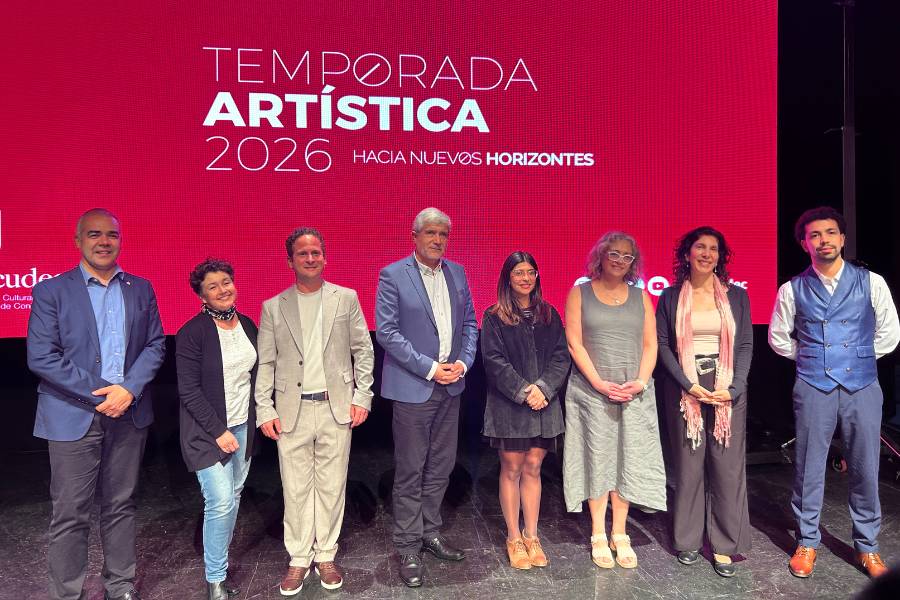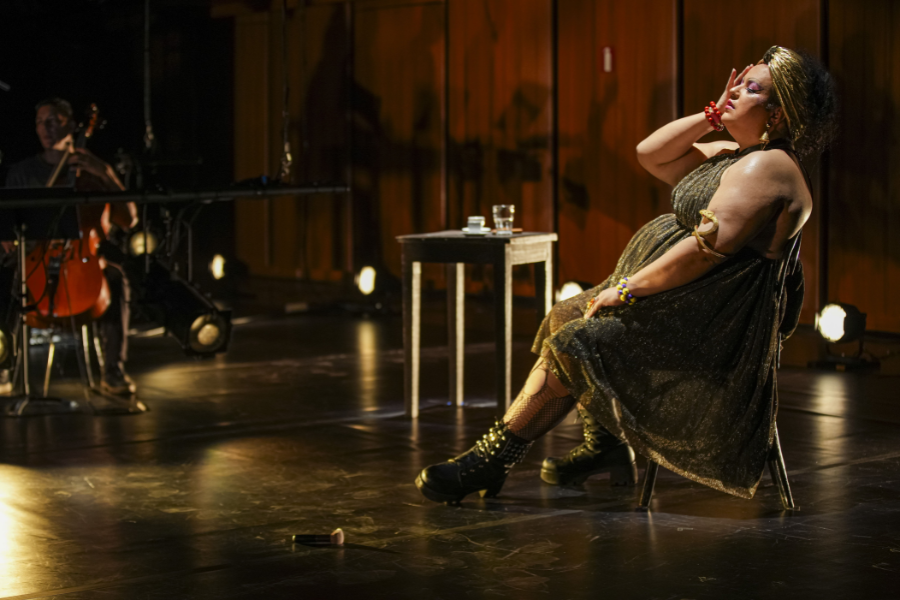Teatro Municipal de Santiago, Ópera Nacional de Chile: tradición e innovación al sur del mundo
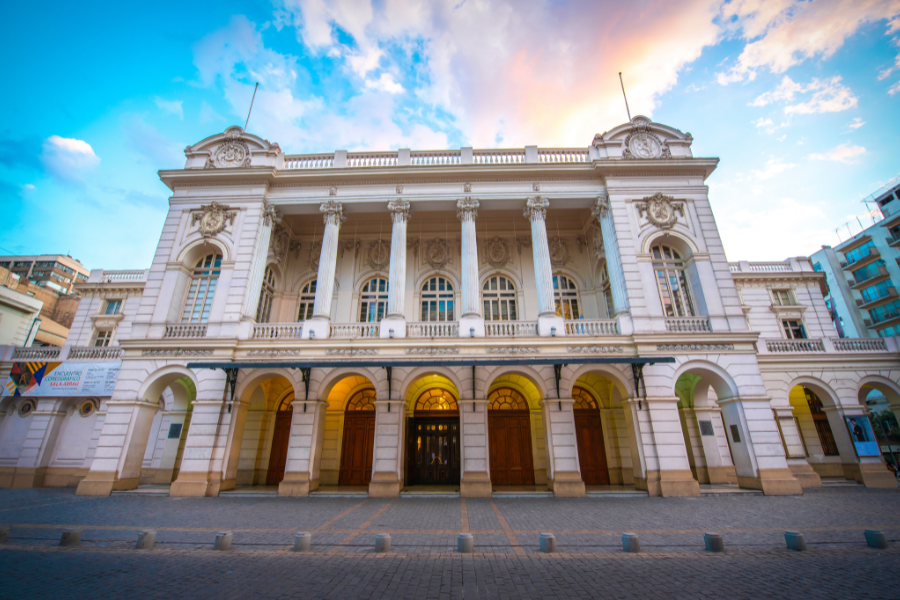
Inaugurado en 1857 con la ópera Ernani de Giuseppe Verdi, el Teatro Municipal de Santiago es el segundo teatro más antiguo de Sudamérica después del Teatro Solís de Montevideo. Diseñado por el arquitecto francés Claude-François Brunet de Baines, el teatro alberga los cuerpos artísticos estables de la Orquesta Filarmónica de Santiago, el Ballet de Santiago y el Coro del Municipal de Santiago, a los que se suman distintos programas de profesionalización artística y formación de audiencias.
Por Valentina Salinas Welsh
Foto de portada: Patricio Cortés
Inaugurado en 1857 con Ernani de Giuseppe Verdi, el Teatro Municipal de Santiago es el segundo teatro más antiguo de Sudamérica después del Teatro Solís de Montevideo. Desde sus comienzos, se convirtió en el centro cultural y social de la ciudad de Santiago: por esa época, la aristocracia santiaguina tuvo una enorme participación y colaboró al surgimiento del panorama cultural que ofrecía. Mucho del quehacer social, como lo eran las tertulias y bailes de la época, se trasladó en gran medida a este nuevo epicentro cultural.
Su construcción fue ordenada en 1847, cuando el presidente Manuel Bulnes cedió el terreno donde estaba la Universidad de San Felipe, ya en 1852 le ordenó al arquitecto francés Claude-François Brunet de Baines su diseño y en 1853 comenzaron los trabajos de construcción y edificación, sólo 35 años después de que Chile alcanzó cabalmente su independencia, en 1818. El Teatro Municipal de Santiago nace como un gran gesto republicano e intelectual: la tradición de la celebración de la gala presidencial es un hito que lo refleja. Esta se realiza cada 18 de septiembre desde su inauguración, fecha en que se conmemora y celebra la independencia de Chile de la corona española.
Ubicado en la calle Agustinas en pleno centro de Santiago de Chile, en el casco histórico, la fachada del edificio pertenece al neoclásico francés —aunque algunos de sus salones son de otras corrientes arquitectónicas como el barroco y el art noveau— y presenta todas las características del estilo: simetría, proporción, uso de columnas, frontones, frisos y arcos, además de la implementación de grandes escaleras y vestíbulos.
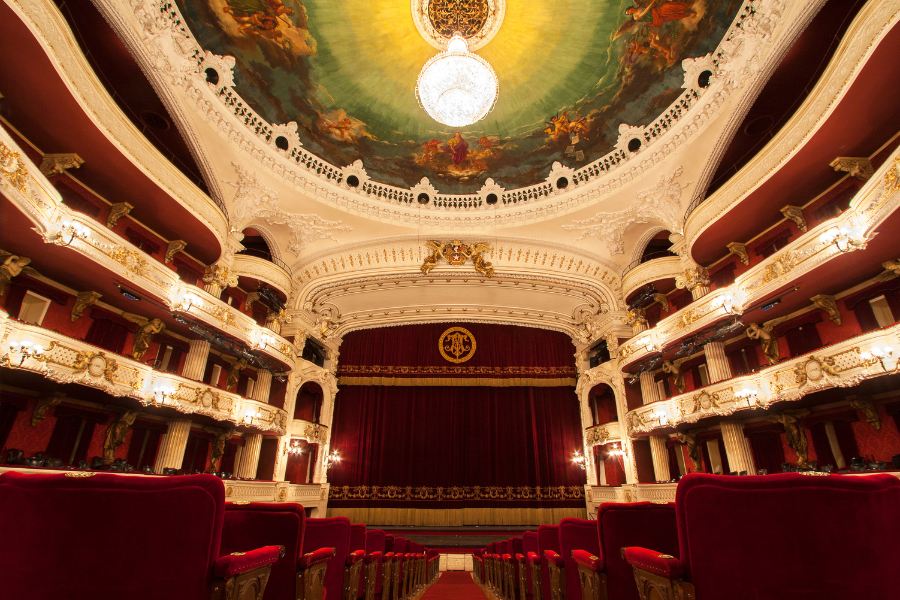
Sala principal del Teatro Municipal de Santiago, con una capacidad de 1.466 ubicaciones, repartidas entre platea, dos pisos de palcos, balcones, galerías y anfiteatro.
Mucho se ha dicho sobre la accidentada historia del teatro; de los terremotos que lo afectaron grandemente en 1906 y 2010 y de los incendios de 1870, 1924 y 2013, entre varios otros incidentes y reparaciones que ha tenido en sus más de 165 años de vida. Así, la historia del Municipal tiene una constante de resiliencia y reinvención y ha logrado adaptarse a los desafíos de la sociedad contemporánea desde diversas áreas de trabajo que se abordarán más adelante.
Varios de los nombres de quienes han pasado por el Teatro Municipal de Santiago han sido figuras en la historia de la música, las artes escénicas y la lírica. En el siglo pasado y el actual, es posible nombrar, entre muchos otros artistas a los bailarines Rudolf Nureyev, Alicia Alonso, Mijail Baryshnikov, Margot Fonteyn o Anna Pavlova; los cantantes Ramón Vinay y Plácido Domingo; los pianistas Arthur Rubinstein, Claudio Arrau, Yevgueni Kissin, los violinistas Yehudi Menuhin e Isaac Stern; y las actrices Sarah Bernhardt y Adelaida Ristori.
Actualmente el Teatro Municipal de Santiago alberga tres cuerpos artísticos estables: la Orquesta Filarmónica de Santiago (1955), el Ballet de Santiago (1959) y el Coro del Municipal de Santiago (1982). A sus cuerpos artísticos estables de larga data, se suma el área de formación artística con su Escuela de Ballet en alianza con la Escuela de Danza de la Ópera de París; el programa Ibáñez Atkinson Young Artist Program (FIA-YAP), orientado a desarrollar las habilidades de jóvenes cantantes chilenos de talento excepcional; la Orquesta de Cámara del Municipal de Santiago y el programa coral Crecer Cantando. A todo esto se suma, el Centro de Documentación de las Artes Escénicas (Centro DAE).
Patrimonios inmateriales de las artes escénicas desde el Teatro Municipal: la fábrica de producciones desde el boceto a la función
El Teatro Municipal de Santiago cuenta con un cuerpo técnico que es patrimonio inmaterial vivo y responsable de la producción de todos los espectáculos. Es un teatro de producción, que está integrado por diversos talleres para la materialización de sus espectáculos, equipos de trabajo que posibilitan la realización de todos los elementos necesarios para que la visión del director de escena de cada producción pueda concretarse: existe una cadena de producción donde las comunicaciones y el trabajo en equipo es fundamental.
Luego del diseño específico detallado y la planificación de la producción, el camino tradicional de la construcción e implementación de una determinada obra comienza su recorrido con el Taller de Realización Escenográfica, el que abarca la construcción, esculturas y utilería de las producciones, luego, el Taller de Pintura toma estos elementos y desarrolla también de manera paralela a la construcción la pintura de telones de fondo de escenario.
De manera paralela o posterior, según sea el caso, el Taller de Vestuario y Caracterización en conjunto con el diseñador, avanzan en la concreción de los diseños y de sus elementos prácticos, se construyen prototipos y vestuario final de la producción. Por último, el área de Maquillaje cumple un rol fundamental en la inserción del imaginario de la obra en las personas-personajes en el ambiente que se está creando.
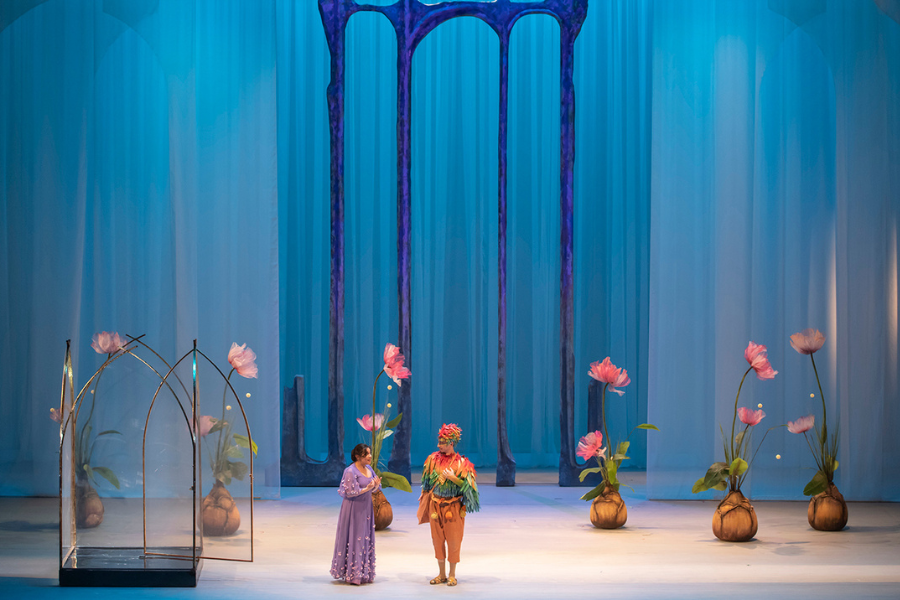
La ópera La flauta mágica (Mozart), presentada en la Temporada 2024 con producción de Christine Hucke. Foto: Patricio Cortés.
Todos los actores mencionados se complementan y se encuentran en Escenario, donde la Iluminación, Sonido, Ambientación, Tramoya, Utilería de Mano y la inclusión de elementos audiovisuales le dan la forma final a toda la producción in situ.
Estos equipos trabajan en conjunto con los directores de escena, escenógrafos, visualistas, iluminadores y vestuaristas de cada una de las producciones a partir de bocetos: en cuanto a los personajes, todos los elementos se hacen específicamente para los intérpretes de dicha producción (zapatos, vestuario y maquillaje y caracterización son creados para el reparto de cada producción específicamente).
El escenario del Teatro tiene un fondo de 18 metros y ancho de 22 metros. La parrilla que aloja los elementos suspendidos de la escenografía se encuentra a 20 metros del piso; cuenta con 47 varas de contrapeso manual, más tres puentes de luces motorizados. Cuenta también el escenario con un suelo modulado por un sistema hidráulico de elevadores.
Transformación desde la tradición
De acuerdo con los objetivos generales del Teatro Municipal de Santiago, uno de ellos es desarrollar y difundir una programación artística de alta calidad en áreas como las artes líricas, musicales y escénicas. Este objetivo se basa en el trabajo de sus cuerpos estables, así como en la colaboración con artistas y profesionales técnicos en sus talleres de producción.
El teatro también busca brindar un lugar de encuentro e intercambio para experiencias artísticas y se esfuerza por garantizar el acceso y la formación de públicos, con el fin de que más personas puedan disfrutar y participar en su proyecto artístico y cultural.
Es en este marco donde aparece durante la pandemia Covid-19 la plataforma digital Municipal Delivery, que ofrece gratuitamente y a libre disposición algunas de sus producciones. Los resultados fueron sorprendentes: el 2023, del total de públicos que asistieron a las distintas temporadas del teatro, un 72% lo hacía por primera vez.
La apertura, inclusión y diversidad de sus audiencias son algunos de los temas que ha impulsado Carmen Gloria Larenas como Directora General desde su llegada en 2019. En una entrevista para Ópera Actual de mayo 2023, señala respecto de la pandemia que:
«El desafío era seguir visibles. Lo logramos con un trabajo en equipo y con el apoyo de los trabajadores, del público y de nuestros patrocinadores (…) Hemos podido transformar las limitaciones en una oportunidad. Con Manon de Massenet, una coproducción con Oviedo y Tenerife estrenada en noviembre (2022), volvimos a la plena normalidad y vimos que el camino recorrido nos llevó a reconocer lo que el Teatro podía hacer sin poner en riesgo su sostenibilidad. Hoy nuestra mayor presión interna es hacer con excelencia cada proyecto.
Claro que nos gustaría tener varios escenarios y mayor presupuesto, y estamos pavimentando ese camino. La clave es el equilibrio entre calidad y sostenibilidad. También, como herencia de la pandemia, hemos puesto foco en el público: este teatro es para todos. Esa diversidad que hoy existe en nuestra sala también está presente en la programación.»
Otro de los objetivos abordados ya desde 2005 es la formación de audiencias, a través del programa Pequeño Municipal, que apunta audiencias escolares y familiares. Contempla espectáculos de ópera, ballet y conciertos, en pequeño formato. Por otro lado, el programa Crecer Cantando, fundado en 1995, busca incentivar y conectar a niñas y niños con el canto coral y la música. Asimismo su área de comunidad y públicos tiene como principal objetivo abrir espacios de formación y vincularse con los distintos públicos, uno de los mejores ejemplos son las tertulias que realiza para cada espectáculo de la temporada.
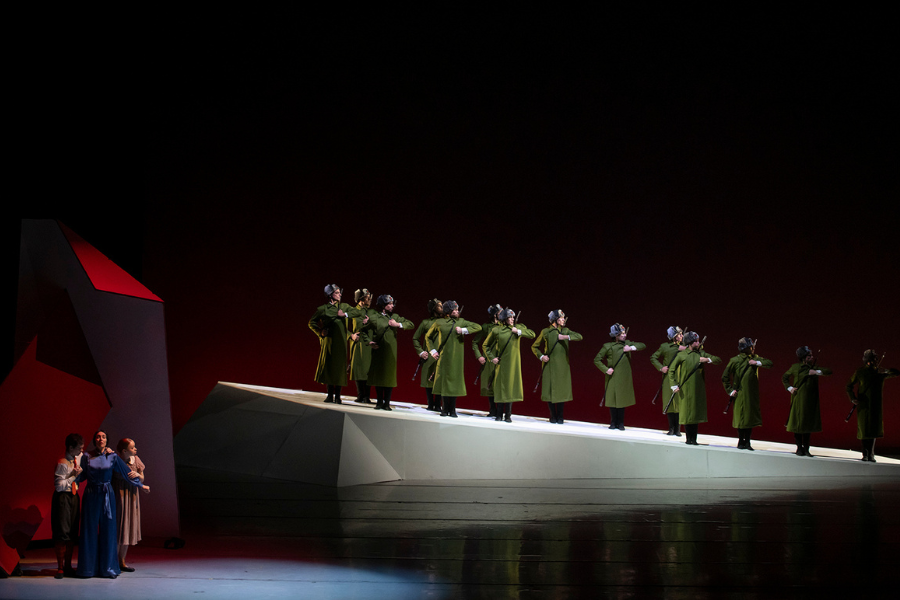
El ballet Nijinska, con concepto, dirección y coreografía de Avatâra Ayuso y dirección musical de Christian Lorca.
El Teatro Municipal de Santiago apunta a la creación y educación de nuevos públicos para incluirlos en la tradición viva de la ópera y las artes escénicas. El modelo es de expansión, cuidando su público histórico, pone énfasis en la preservación, valoración, transmisión y revitalización de su patrimonio cultural, tanto material como inmaterial.
La institución aborda igualmente temas de paridad, quizás ya como herencia del hito histórico en Chile de la firma de la ley que permitió el voto femenino y que tuvo lugar en el teatro mismo, 8 de enero del año 1949. Entre algunas de las iniciativas al respecto, es posible mencionar el HUB de Directoras de Orquesta del Teatro Municipal, cuya primera edición se realizó el año 2022: un espacio donde las directoras mujeres pueden compartir y trabajar juntas, potenciarse y colaborar a través de actividades como clases magistrales, conversaciones, charlas y, evidentemente, conciertos.
El Teatro también hecho esfuerzos por explorar la vanguardia de las tecnologías escénicas; ya sea desde puestas en escena con efectos especiales, la incorporación de pantallas para la ambientación escenográfica a gran escala y proyecciones multimedia, entre otras.
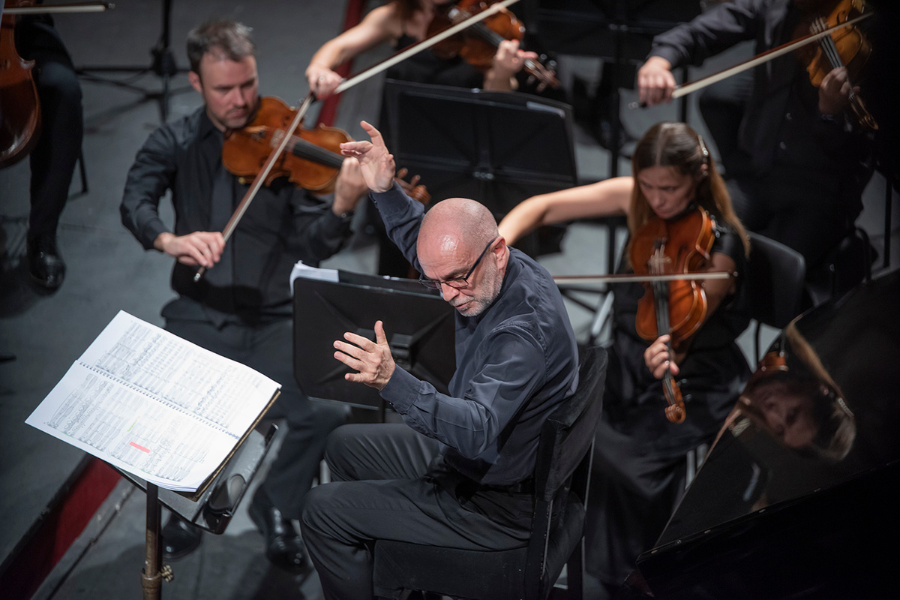
Roberto Rizzi Brignoli, director titular de la Orquesta Filarmónica de Santiago, en concierto. Foto: Patricio Cortés.
Más recientemente, destaca la revolucionaria iniciativa de XR Stage, donde se capacita a los equipos técnicos de este teatro en el manejo de tecnología de simulación virtual de su escenario, proyecto en pleno desarrollo en conjunto con otros teatros de la red de Ópera Latinoamérica, el Centro para la Revolución Tecnológica en Industrias Creativas (Chile) y el apoyo de Corfo y que a mediano plazo podría revolucionar el quehacer escénico en el continente y en el mundo.
El Teatro Municipal de Santiago, así, sostiene el diálogo entre la transformación y la tradición: su escenario es testigo tanto de innovación como de continuación del legado artístico de las artes escénicas en Chile. En el cruce entre lo tradicional y la vanguardia, se encuentra el espacio para lo contemporáneo.


